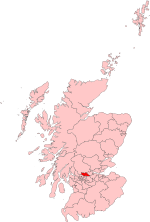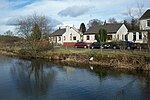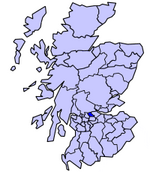Croy, North Lanarkshire

Croy is a village in North Lanarkshire, Scotland. A former mining community, Croy is situated south of Kilsyth and north of Cumbernauld, some 13 miles (21 km) from Glasgow and 37 miles (60 km) from Edinburgh on the main railway line between the two cities. Croy has a population of about 1,390.Croy railway station is the transport hub for the surrounding area and is one of the busiest stations in the Scottish Central Belt. The station has frequent services seven days a week to Glasgow, Edinburgh and Stirling. The station has undergone significant expansion in recent years including extended platforms, increased car parking facilities, and a new station building & ticket office. The line has been electrified as part of the Edinburgh to Glasgow Improvement Programme.
Excerpt from the Wikipedia article Croy, North Lanarkshire (License: CC BY-SA 3.0, Authors, Images).Croy, North Lanarkshire
Constarry Road,
Geographical coordinates (GPS) Address Nearby Places Show on map
Geographical coordinates (GPS)
| Latitude | Longitude |
|---|---|
| N 55.958484 ° | E -4.041831 ° |
Address
Constarry Road
Constarry Road
G65 9HT , Smithstone
Scotland, United Kingdom
Open on Google Maps











